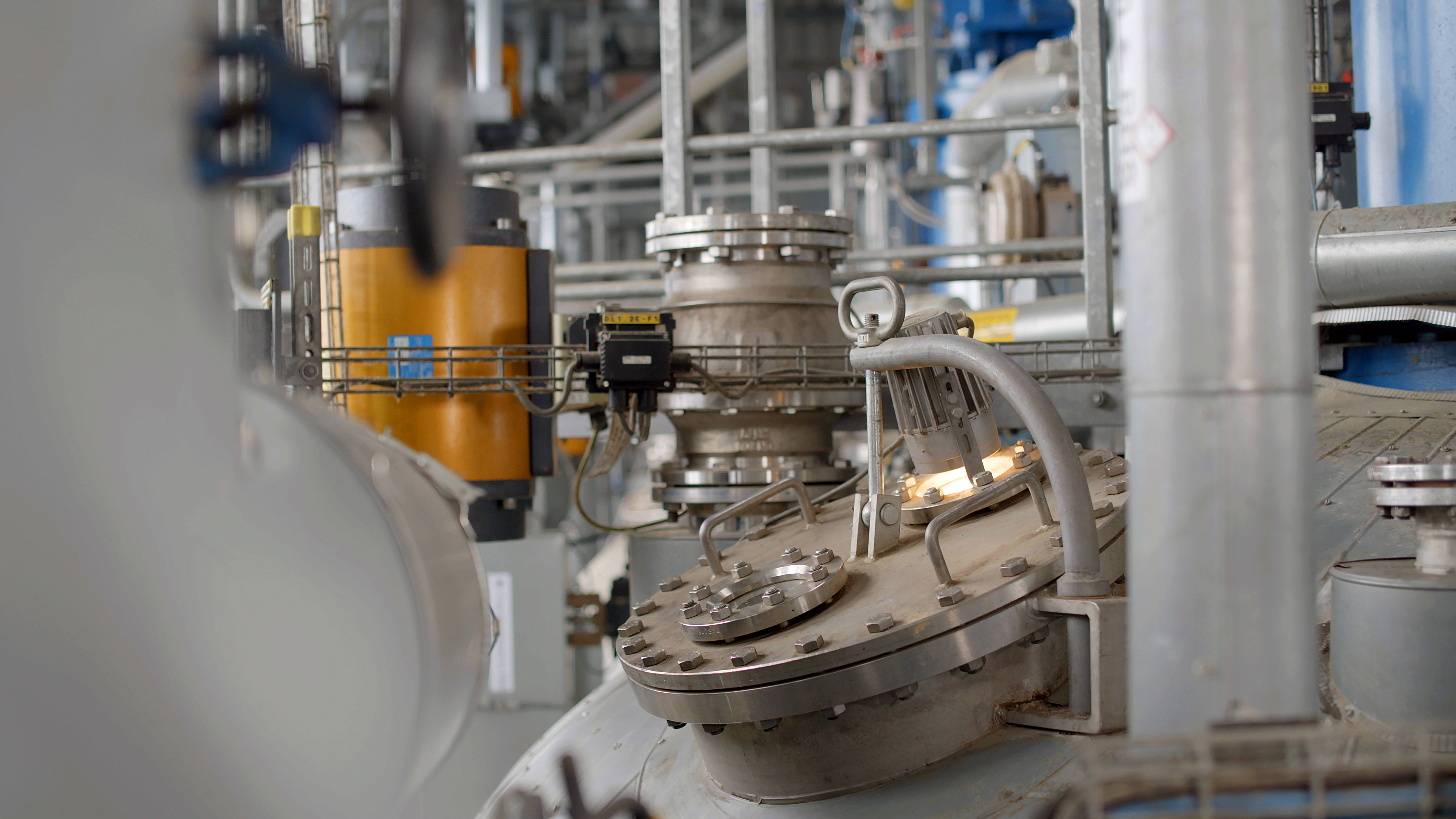
A chemical company, the Technical University of Dresden and Phoenix Contact: Research and industry, hardware and software. The project brings together three very different partners with different backgrounds and requirements for the project. The use case demonstrates how different components can be used to integrate a simple and suitable monitoring system that facilitates the exchange of data between man and machine.
A chemical company, the Technical University of Dresden and Phoenix Contact: Research and industry, hardware and software. The project brings together three very different partners with different backgrounds and requirements for the project. The use case demonstrates how different components can be used to integrate a simple and suitable monitoring system that facilitates the exchange of data between man and machine.
Machine failures during ongoing operations always have negative consequences for a company. In the worst case, breakdowns can mean downtime for company, which can result in high losses. Plannable downtime would therefore be advantageous, so that downtimes during ongoing operations can be avoided or prepared for. The developed pilot project between a chemical company, the Technical University of Dresden and Phoenix Contact, shows how a simple and suitable solution can be implemented using PLCnext Technology to prevent failures during operation. The monitoring of an agitator vessel serves as the project by implementing the control through a NOA-compliant monitoring model in a simple and flexible way.
Three components came together for the monitoring. An agitator vessel as a suitable object for the test with an integrated 250kW stirrer and two subsequent preparation tanks with 90kW stirrers each. Important to remember when monitoring the system: The neuralgic points of a stir tank are the foot bearings of the stirrers and the shaft bearings with their associated seals. If a foot bearing is severely worn out, causing a considerable imbalance in the system, it must be replaced. This replacement is always associated with great effort and downtime which can take days or even weeks in the worst case. The agitator vessel must be opened, and the stirrer lifted out with the help of a truck-mounted crane before work can even begin on replacing the bearing inside. If the shaft of the stirrer has also been damaged, a replacement must be procured for it. Having a reliable indicator of the bearing’s wear would provide preparation for repair, as well as planning for downtime, skilled labor and spare parts. This is called Predictive Maintenance in Industry 4.0. The aim: To minimize plant downtimes, to detected possible defect early on – even before they occur.

Development Process
The best way to implement the project is with the support of a controller to provide a minimally invasive change. A suitable candidate for this is the PLCnext Control. The following features are helpful here: an OPC UA interface for the NOA channel, an open platform for integrating high-level languages and complex monitoring models, as well as a simple connection to the cloud and coverage of current IT security requirements.
An important element is the measurement of the motor currents. A current transformer, around each conductor of the motor cable, is the appropriate solution for measuring and generating results. From currents above 50 amperes, foldable current transformers are a suitable solution, which can simply be unfolded and placed around the conductor. The motor manager from Phoenix Contact is a good choice for an evaluation device. The modular device converts the voltage signals of the measuring transformers into standardized values that are provided on the fieldbus interface; in this case, a Profinet head module was used.
For a better collection of the results of the monitoring as well as the current measured values, access to a cloud is a must have. To upload data to the cloud, an MQTT app for the PLCnext Control is required, which can be easily uploaded to the controller from the PLCnext Store. Any additional applications of choice can be easily installed simply by connecting the PLCnext control to the PLCnext Store.
Combining programming languages
To guarantee security, the NOA concept is used. This enables the use of new technologies in existing plants that do not have the latest interfaces. A side channel creates the communication link with the cloud. In doing so, the concept focuses on the fact that information is only taken from the plant, but it can never have a harmful effect on the plant. The side channel of the NOA concept connects different levels of the automation pyramid via a particularly suitable interface: OPC UA, which is based on Ethernet. The information of the interface is presented in a tree structure that provides transparency. This tree structure can be created by the programmer as needed and optimized by the Process Automation Device Information Model (PA DIM) so that there is a transparent order of names and arrangements of the variables, sensors and actuators in the process environment on the OPC UA server.
In order for an evaluation to also take place in this use-case, a model must be created for prediction. The algorithms developed by the TU Dresden which run on the PLCnext Control include MATLAB Simulink models. Two stages are considered here. The first stage is modeling, in which only measurement data is included which is taken by the additional attached sensors. The advantage is fast commissioning, as there is no data exchange from the process control system to the additional controller. During operation of the motors, the phase and amplitude of the three motor currents can be compared with each other. Inequality or periodic patterns can thus be used, for example, to detect an imbalance that may be caused by damage to the shaft bearing or foot bearing. The second stage of modeling includes existing measured data. Together with the new data, a measured current curve can be better evaluated and facilitate an assessment about a fault case. This development process enables the chemical company to calculate possible faults or, in the worst case, a failure of an agitator.
Conclusion
The PLCnext Control combines features like a classical industrial programming language such as IEC 61131-3 and high-level language like C#, C++ or Python, an OPC UA interface and a simple connection to the cloud to act as a suitable adapter between man and machine in this pilot project. The functions provided by the adapter, as well as the programming of the TU Dresden, can enable a chemical company to optimally monitor stirred tanks. Advantageous here are the time savings and cost savings when a failure can be planned and calculated.




